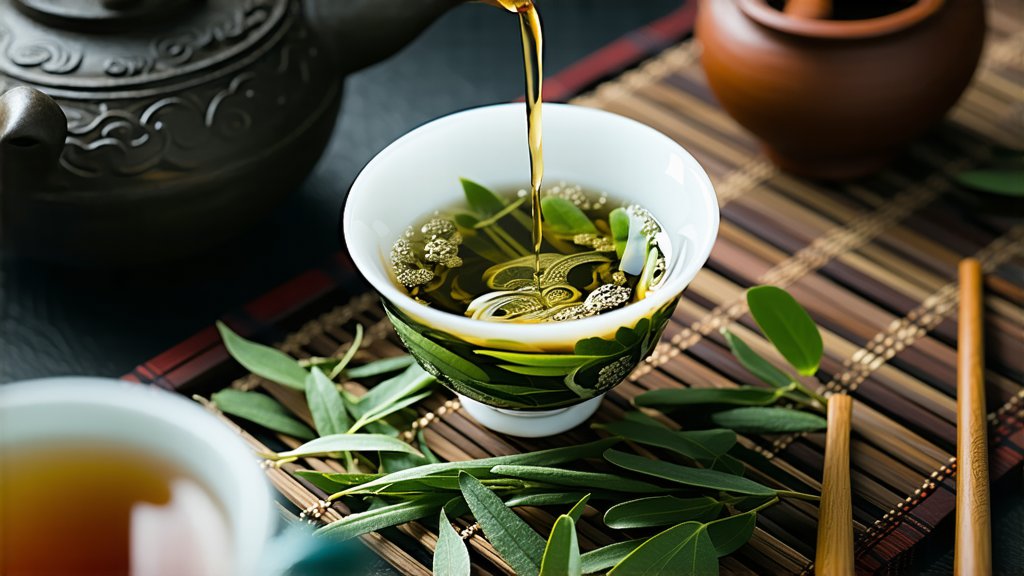
In the vast and diverse landscape of Chinese tea culture, few varieties capture the imagination quite like Longjing tea, also known as West Lake Dragon Well tea. This exquisite green tea hails from Hangzhou, Zhejiang province, nestled in the picturesque surroundings of West Lake – a place often celebrated for its natural beauty and historical significance. With a history spanning over a thousand years, Longjing tea is not just a beverage but a cultural icon that embodies the essence of Chinese tea artistry.
Historical Background
The origins of Longjing tea can be traced back to the Tang Dynasty (618-907 AD), but it wasn't until the Qing Dynasty (1644-1912) that it gained widespread recognition. According to legend, two dragons descended from heaven to play in the West Lake during a time of drought, and their movements created springs that nourished the land. The first buds of the Longjing tea plants sprouted at these very springs, giving the tea its name "Dragon Well." Over centuries, the cultivation techniques evolved, and today, Longjing stands as one of China's most revered teas.
Varieties and Characteristics
Longjing tea comes in several grades, primarily determined by the timing of harvest and the quality of the leaves. The highest grade, known as "Xin Cha" or pre-Qingming tea, is harvested before the Qingming Festival (Tomb Sweeping Day), typically around April 5th. This early harvest ensures the tenderest leaves, which are rich in nutrients and flavor. The leaves of Longjing tea are flat and smooth, resembling the shape of spears or well water, hence its alternate name "Flat Tea."
The tea boasts a distinctive appearance with a vibrant emerald green color and a downy covering of fine hairs. When brewed, it unleashes a captivating aroma that evokes fresh chestnuts or orchid blossoms. The flavor profile is characterized by a harmonious balance of sweetness and slight bitterness, leaving a refreshing aftertaste that lingers on the palate.
Cultivation and Production
The journey of Longjing tea from plant to cup involves meticulous care and craftsmanship. The tea bushes are primarily grown on the slopes surrounding West Lake, where the unique microclimate fosters optimal growth conditions. These areas are known for their cool temperatures, high humidity, and fertile soil, all contributing to the exceptional quality of the tea.
Harvesting Longjing tea is an art form in itself. Only the youngest shoots and leaves are selected, usually consisting of one bud and one or two leaves. This selective picking ensures that only the finest parts of the plant are used for processing. Once harvested, the leaves undergo a series of intricate steps to transform them into the finished product.
The first step involves spreading the freshly picked leaves out in the sun for withering, allowing them to lose some moisture and become more pliable. Next comes the crucial process of pan-firing, where skilled tea masters heat large woks to high temperatures and manually stir the leaves continuously. This step not only halts oxidation but also develops the characteristic chestnut aroma and bright green color. The leaves are then shaped by hand or machine into their signature flat appearance.
After shaping, the leaves undergo a final round of firing to remove any remaining moisture and enhance their flavor. The entire production process requires precise control of temperature, timing, and technique to achieve the desired quality. As a result, each batch of Longjing tea is a testament to the skill and dedication of its makers.
Tasting and Appreciation
Tasting Longjing tea is an experience that engages all the senses. To fully appreciate its nuances, follow these steps:
-
Warm the Teaware: Begin by rinsing your teapot and cups with hot water to ensure they are at an optimal temperature for brewing.
-
Measure the Leaves: Use approximately 3 grams of loose leaf tea per 150 ml of water. For a more robust flavor, you can adjust the ratio slightly.
-
Steeping: Pour hot water (around 80°C or 176°F) over the leaves and let them steep for about 1-2 minutes. Avoid using boiling water as it may scorch the delicate leaves.
-
Observe: Watch as the leaves unfurl gracefully in the water, releasing their vibrant color and aroma.
-
Sip Slowly: Take small sips, allowing the tea to coat your mouth and savor its complexity. Notice the initial burst of flavor followed by a lingering sweetness and subtle bitterness.
-
Multiple Infusions: Longjing tea can be steeped multiple times, with each infusion revealing different layers of flavor. Typically, the first infusion is the strongest, while subsequent ones offer a milder taste.
Conclusion
Longjing tea is more than just a drink; it is a window into Chinese culture and history. Its journey from the misty hills of West Lake to the tea cups of enthusiasts worldwide encapsulates centuries of tradition and innovation. Whether enjoyed alone for meditation or shared among friends, the experience of drinking Longjing tea transcends time and place, connecting us to the natural world and our shared humanity. So next time you savor a cup of this verdant elixir, remember that you are partaking in a ritual that has delighted generations and continues to enchant tea lovers around the globe.